What is ingrown hair?
Ingrown hair, also called razor or shaving bumps or barber’s itch, is an inflammation caused by the hairs that grow back into the skin, usually after shaving.
The medical term for ingrown hair on the face and front of the neck is pseudofolliculitis barbae, on the back of the neck pseudofolliculitis nuchae and elsewhere on the skin pseudofolliculitis cutis or corporis [23,24].
Mechanism (Pathophysiology)
Ingrown hair is a foreign-body inflammatory reaction to hair that [1]:
- grows back or retracts into the skin after exiting the hair follicle, usually after shaving (extrafollicular form)
- starts to grow sideways underneath the skin before it reaches the skin surface, usually due to a clogged hair follicle (transfollicular form).
Causes and Risk Factors
The main cause of ingrown hair is shaving close to the skin, plucking hair in the nostrils or eyebrows, waxing and other methods of epilation or depilation [5].
Risk factors for ingrown hair include:
- Thick curly hair, especially in black Africans from sub-Saharan region and Hispanics and in those with a genetic predisposition [9,23]
- Excessive hair (hypertrichosis, hirsutism – in women), for example, due to genetics, steroid treatment, Cushing disease or polycystic ovary syndrome (PCOS) [5]
- Repeating pressure on the hair-bearing skin due to sitting, driving [24] or wearing rough clothes or tight bra
- Having scars
Symptoms
Ingrown hair can appear as a single small (2-4 mm) red or brown bump or blister with a hair in the middle or more commonly as a group of bumps (Pictures 1-4). The infected bumps can have white pus-filled centers. The rash can be itchy or tender to touch but is rarely painful [1].
Lesions do not usually bleed on their own but may do so when shaved [1].
In men, ingrown hair can appear on the face, chin, front of the neck, scalp or on the penis shaft or scrotum.
In women, ingrown hair can appear on the shaved areas, like armpits, legs, pubic area (vulva, vaginal entrance) and buttocks and in the bikini area (breasts, nipples, upper back).
Ingrown hair can also develop on the areas with repeated pressure on the skin (back, chest, buttocks, thighs, groin).
Pictures
Picture 1. Razor bumps on the neck
(Samuel Freire da Silva, MD, Dermatology Atlas)
Picture 2. Ingrown hair in a darker skin
(Samuel Freire da Silva, MD, Dermatology Atlas)
Picture 3. Ingrown hair, close-up look
(Samuel Freire da Silva, MD, Dermatology Atlas)
Picture 4. Ingrown hair creating “hair loops”
(Samuel Freire da Silva, MD, Dermatology Atlas)
Differential Diagnosis
Rashes that can look similar to ingrown hair [2]:
- Insect bites (red itchy bumps)
- Acne vulgaris (red bumps with white centers; not related to shaving)
- Staphylococcal folliculitis (tender red bumps with white centers)
- Warts (no hair in the middle)
- Moles (nevuses)
- Hot tub folliculitis caused by the Pseudomonas aeruginosa bacteria (red rash under the swimsuit)
- Tinea barbae (a fungal infection in the bearded area in men; draining lumps and rash that crusts over)
- Perioral dermatitis (red rash around the mouth, usually in women)
- Viral infections by Herpes simplex (cold sore near the lips), Herpes genitalis (on the skin-mucosal border in vulva) or Herpes zoster – shingles (burning rash with crusts)
- Urticaria (hives) or contact dermatitis (eczema) (itchy red bumps as an allergic reaction to food or skin irritants)
- Keratosis pilaris (goose bumps-like rash: upper arms/thighs/buttocks)
- Miliaria, sweat rash or prickly heat (itchy red bumps: face/armpits)
- Reaction to foreign bodies, like thorns
- Red rash as a side effect of medications
- Scabies bites (very itchy red rash: wrists/elbows/armpits)
- Lice bites
- Guttate psoriasis (pink bumps, mainly on the trunk)
- Cutaneous pili migrans or “ingrowing hair” (very rare, mainly in Asians) [11]
Treatment
Growing a Beard
An ingrown hair often resolves on their own if you allow beard to grow without shaving from 2 weeks to a month [1]. Keep the beard growing until all ingrown hair disappears. Warm compresses for 10 minutes 3 times a day can speed up healing [12].
Home Remedies: Removal Tools, Facial Scrubs and Exfoliators
Removal tools. You can release (not pluck) stubborn ingrown hairs by sterile tweezers with pointed tips, a needle or toothpick.
Scrubs. Before bed, massage your face by a soft brush or sponge, scrubbing glove or an electrical circular brush to release the ingrown hair, so they will not continue to grow in during the night.
Exfoliators. Coffee grounds, sugar and various commercial ointment containing rough particles intended for skin exfoliation are available, but they do not seem to be very popular among dermatologists.
Steroids
Hydrocortisone cream (1%) can reduce inflammation [12]. NOTE: Regular, prolonged use of steroid creams can result in permanent thinning of the skin.
Antibiotics
- Ointments containing antibiotics erythromycin, clindamycin [14] or erythromycin in combination with benzoyl peroxide may be helpful in severe cases of ingrown hair, but more studies are necessary [6,12].
- The antibiotics by mouth, such as tetracycline (doxycycline) or erythromycin, are used to treat severe infected ingrown hair with pustules and abscesses [1,3,6].
Retinoids
Tretinoin ointments applied nightly can reduce the overgrowth of the cells in the hair follicles and thus prevent their clogging and trapping of the hair in them [6].
The combination cream (tretinoin 0.05%, fluocinolone acetonide 0.01%, and hydroquinone 4%) can help in some individuals [6].
Avoid Popping and Plucking
Do not pop ingrown hair blisters to avoid infection and permanent scars.
Plucking the hair may remove the hair incompletely, which may result in developing of new ingrown hair [40].
Other
There is insufficient evidence about the effectiveness of the following products in the treatment of ingrown hair:
- Nonsteroidal anti-inflammatory drugs (NSAIDs), such as aspirin, ibuprofen
- Electrolysis is not considered very effective, is expensive, can be painful and can leave dark spots [12,17].
- Photodynamic therapy with methyl aminolevulinate can be useful in severe cases [1,16].
- Intense pulse light (flashlamp) therapy is used to remove unwanted hair [26].
- According to anecdotal reports, applying apple cider vinegar, baking soda paste, cucumbers, honey, tea bags or yogurt can soften the skin and help release the ingrown hair.
- Antifungal and antibacterial agents: bitter orange extract, yucca stem extract, tea tree oil, acnacidol
- Soothing and anti-inflammatory agents: prickly ash bark, calendula, allantoin, arnica, sodium hyaluronate;
- To reduce hyperpigmentation (dark spots): niacinamide, liposome vitamin C.
- References: [40]
Prevention
Shaving
- Avoid unnecessary depilation.
- If acceptable, keep having a beard, at least 0.5 to 3 mm long.
- Before shaving, moisten the face by showering or covering it with a warm moist cloth to soften the hair, which can result in more rounded tips when shaved. Instead of shaving foam, which can dry the skin, use lubricating shaving gels, for example, the ones containing oatmeal gel.
- Do not pull the skin taut before strokes. Shave in the direction of hair growth or as you find it is better for you.
- Do not shave close to the skin. Use razors with one rather than multiple blades. Foil-guarded razors are available.
- When using electric shavers, use trimming to 0.5 or 1 mm instead of shaving or use a clipper instead of a shaver.
- Rinse the face with cold water after shaving.
- References: [1,8,12,15,17,27]
Eflornithine
Eflornithine hydrochloride cream (13.9%) slows the growth of the hair and makes it thinner and thus less prone to grow back [6,17]. It was originally intended for women with excessive hair growth (hirsutism). It should be used only on the face and under the chin, twice a day, at least 8 hours apart and not sooner than 5 minutes after shaving [25]. It is a pregnancy C category drug, which means insufficient research has been done to prove its safety in pregnant women [25].
Eflornithine by mouth starts to work in 4-8 weeks and stops to be effective in 8 weeks after treatment discontinuation [3].
Laser
Laser treatment temporarily–for several months–or permanently removes the hair [6].
Diode laser (800-810 nm; infrared) can be effective in the treatment of ingrown hair; it is appropriate for individuals with skin types I to V [6,19,20]; the results can be better in combination with eflornithine gel applied between the laser sessions [17]. Side effects include white or dark spots and scars [6].
In one 2009 study, pulsed Alexandrite laser (755 nm) was more effective than intense pulsed light (IPL) [18].
Treatment with Nd:Yag laser (1064 nm) can be effective in darker skin types IV to VI [6,13,17,21,22] but may cause permanent hair loss [6].
Depilatory Creams (Chemical Depilatories)
Chemical depilatories should be used only every second or third day to avoid inflammation and skin hyperpigmentation [6,12].
- Barium sulfide paste applied for 3-5 minutes breaks the hair bluntly and thus reduces the risk of its re-entry into the skin [6].
- Calcium thioglycolate lotion or paste applied for 10-15 minutes can also help [6].
- Salicylic acid (a beta-hydroxy acid) has been reported to be helpful in mild to moderate cases; it dries the skin, so it is more appropriate for oily skin [29]. In severe cases, a dermatologist can prescribe a stronger formula of salicylic acid (20-30%) [33].
- Glycolic acid (an alpha-hydroxy acid) may help; it acts as a moisturizer, so it is more appropriate for dry skin [1,15,29].
NOTE: Some dermatologists believe that chemical peels or any creams that irritate the skin do not work well for ingrown hair [27].
Diet
No diet to prevent ingrown hair is known to be effective [6].
Complications
1. Dark Spots (Hyperpigmentation)
Dark spots can result from chronic inflammation of ingrown hair or laser treatment [1]. Laser treatment can also leave white spots [28]. You may ask a dermatologist:
- Which lotion or cream to use to reduce dark spots? Retinoids adapalene or tazarotene can help [30].
- Which type of laser treatment is most appropriate for your type of skin?
Picture 5. Ingrown hair in a darker skin
(Wikipedia, Creative Commons license)
2. Infection: Staphylococcal Folliculitis
Staph folliculitis is a bacterial infection of ingrown hair with burning red bumps with white pus-filled centers. In severe folliculitis, abscesses (pus collections under the skin) or red painful boils (furuncles) can develop. Mild folliculitis can heal on its own; warm compresses can help relieve pain. In severe cases, an ointment containing the antibiotic clindamycin, erythromycin, fucidin or mupirocin can be applied, but not for more than a week to avoid bacterial resistance [35,37].
Picture 6. Staphylococcal folliculitis
(Samuel Freire da Silva, MD, Dermatology Atlas)
3. Chronic, Deep Folliculitis With Scabs
The deep-seated ingrown hair on the bearded area (cheeks, chin or upper lip) is called sycosis barbae. It can appear with lumps that can ooze fluid that dries off and forms scabs, which can look like eczema. Treatment includes cleaning with chlorhexidine and saline compresses for 15 minutes twice daily; in severe cases, antibiotics, tretinoin or drainage can help [36].
Picture 7. Deep ingrown hair (sycosis barbae)
(Samuel Freire da Silva, MD, Dermatology Atlas)
4. Pilonidal Cyst
A pilonidal cyst is a reaction to ingrown hair that develops at the bottom of the tailbone at the top of the cleft of the buttocks. It most commonly develops in people who sit a lot, for example, in truck drivers; especially in young obese men with coarse hair [31]. If a cyst gets infected it becomes swollen and it may ooze fluid. Treatment is by drainage or surgical removal of a cyst.
Picture 8. Pilonidal cyst between the buttocks
(Samuel Freire da Silva, MD, Dermatology Atlas)
Hypertrophic Scars or Keloids
Chronic ingrown hair can develop into raised scars or keloids, which can be itchy or painful. Dark scars can be bleached by hydroquinone or lighten by a Nd:Yg laser [38]. Injections of prednisone [38] or triamcinolone acetonide can reduce the scar size. Scars can also be surgically reduced or removed. More treatment options are described here.
Picture 9. Keloid scars and ingrown hair (Wikimedia, Creative Commons license)
Summary of Prevention and Treatment of Ingrown Hair
If you are prone to get ingrown hair:
- Do not shave or at least do not shave close to the skin.
- Release ingrown hair with tweezers but do not pluck them.
- For inflamed ingrown hair, you can use mild (1%) hydrocortisone cream.
- For severely inflamed ingrown hair you can additionally use topical or oral antibiotics or topical tretinoin (if prescribed).
- Eflornithine hydrochloride gel (13.9%) slows hair growth and makes hair softer and thus less prone to grow in.
- Laser treatment can prevent new ingrown hair from reappearing for several months.
- Ask a dermatologist about the treatment of dark spots or scars.
- References
- Follliculitis barbae and pseudofolliculitis barbae DermNetNZ
- Ely JW et al, 2010, The Generalized Rash: Part I. Differential Diagnosis American Family Physician
- Pseudofolliculitis barbae Merck Manual, professional version
- Greidanus TG, Pseudofolliculitis of the beard, overview Emedicine
- Greidanus TG, Pseudofolliculitis of the beard, clinical presentation Emedicine
- Greidanus TG, Pseudofolliculitis of the beard, treatment Emedicine
- Greidanus TG, Pseudofolliculitis of the beard, medication Emedicine
- Greidanus TG, Pseudofolliculitis of the beard, follow-up Emedicine
- Ingrown hair Canadian Dermatology Association
- Ingrown hair prevention Mayo Clinic
- Luo D-Q et al, 2016, Ingrowing hair, a case report PubMed Central
- Pseudofolliculitis barbae UpToDate
- Ross EW et al, 2002, Treatment of pseudofolliculitis barbae in skin types IV, V, and VI with a long-pulsed neodymium:yttrium aluminum garnet laser PubMed Central
- Cook-Bolden FE et al, 2004, Twice-daily applications of benzoyl peroxide 5%/clindamycin 1% gel versus vehicle in the treatment of pseudofolliculitis barbae PubMed
- Perricone NV, 1993, Treatment of pseudofolliculitis barbae with topical glycolic acid: a report of two studies PubMed
- Diernaes JE et al, 2013, Successful treatment of recalcitrant folliculitis barbae and pseudofolliculitis barbae with photodynamic therapy PubMed
- Xia Y et al, 2012, Topical eflornithine hydrochloride improves the effectiveness of standard laser hair removal for treating pseudofolliculitis barbae: a randomized, double-blinded, placebo-controlled trial PubMed
- Leheta TM, 2009, COMPARATIVE EVALUATION OF LONG PULSE ALEXANDRITE LASER AND INTENSE PULSED LIGHT SYSTEMS FOR PSEUDOFOLLICULITIS BARBAE TREATMENT WITH ONE YEAR OF FOLLOW UP PubMed Central
- Kauvar AN, 2000, Treatment of pseudofolliculitis with a pulsed infrared laser PubMed
- Smith EP et al, 2005, Modified superlong pulse 810 nm diode laser in the treatment of pseudofolliculitis barbae in skin types V and VI PubMed
- Schulze R et al, 2009, Low-fluence 1,064-nm laser hair reduction for pseudofolliculitis barbae in skin types IV, V, and VI PubMed
- Weaver SM 3rd et al, 2003, Treatment of pseudofolliculitis barbae using the long-pulse Nd:YAG laser on skin types V and VI PubMed
- Jazterbski JZ et al, 2015, Pseudofolliculitis cutis: a vexing disorder of hair growth PubMed
- Puhan MR et al, 2015, Pseudofolliculitis Corporis: A New Entity Diagnosed by Dermoscopy PubMed Central
- Eflornithine topical Drugs.com
- Intense pulsed light therapy DermNetNZ
- Crutchfield C, Lasers, shaving tips address pseudofolliculitis barbae Dermatology Times
- Shenenberger DW et al, 2002, Removal of unwanted facial hair American Family Physician
- Kundu RV et al, 2013, Dermatologic Conditions in Skin of Color: Part II. Disorders Occurring Predominantly in Skin of Color American Family Physician
- Davis EC et al, Postinflammatory Hyperpigmentation; A Review of the Epidemiology, Clinical Features, and Treatment Options in Skin of Color PubMed Central
- Pilonidal cyst, risk factors Mayo Clinic
- Bolognia JL et al, 2003 Dermatology
- Wesley N, 2013, Pseudofolliculitis barbae – tips for patients Dermatology News
- Harmon H, 2014, Preventing pseudofolliculitis barbae in male clients Skin Inc
- Management of bacterial infections of the hair follicles – folliculitis and furunculosis The International Foundation for Dermatology
- Thomas J, 2008, What is sycosis barbae and how to treat it? DoctorNDTV
- Bacterial folliculitis DermNetNZ
- Altman E, Kaplan HJ, Laser Resurfacing for Razor Bump Scars? RealSelf


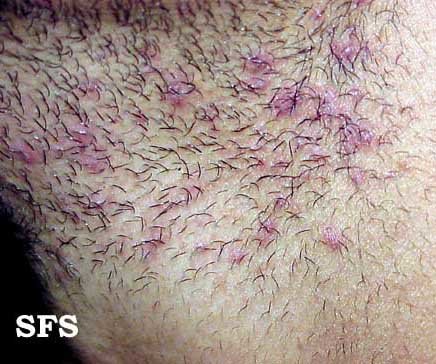
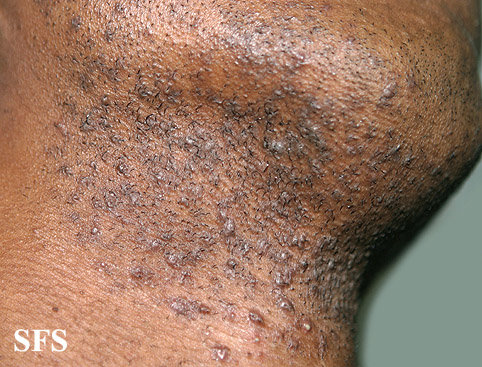
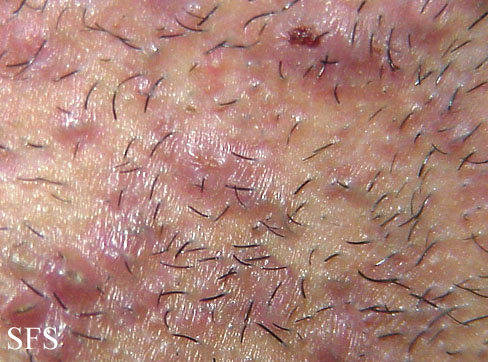
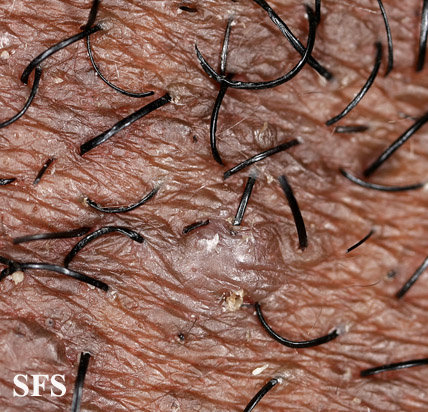
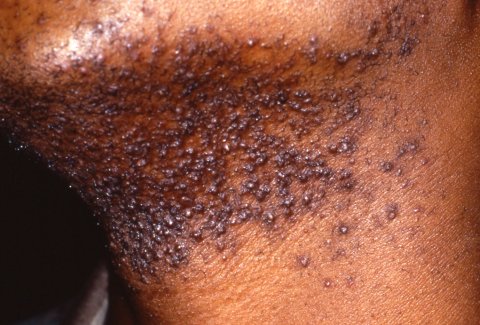
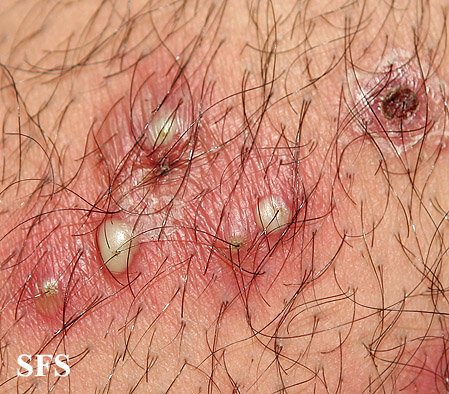
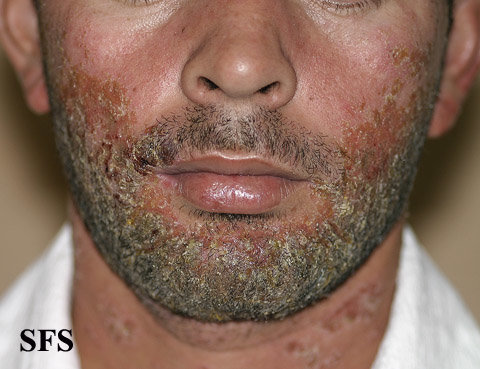
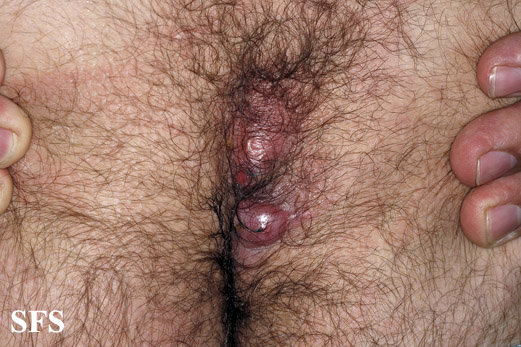
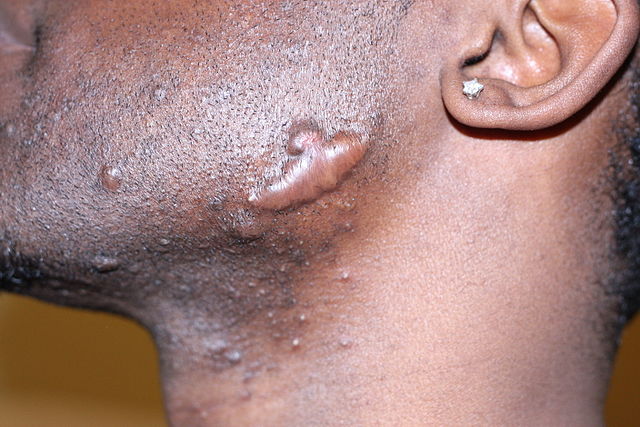
Im taking doxycycline hyclate 100mg twice a day for about a week now for infected ingrown hair under my armpit and was wondering how long does it take to view results after taking the pills??